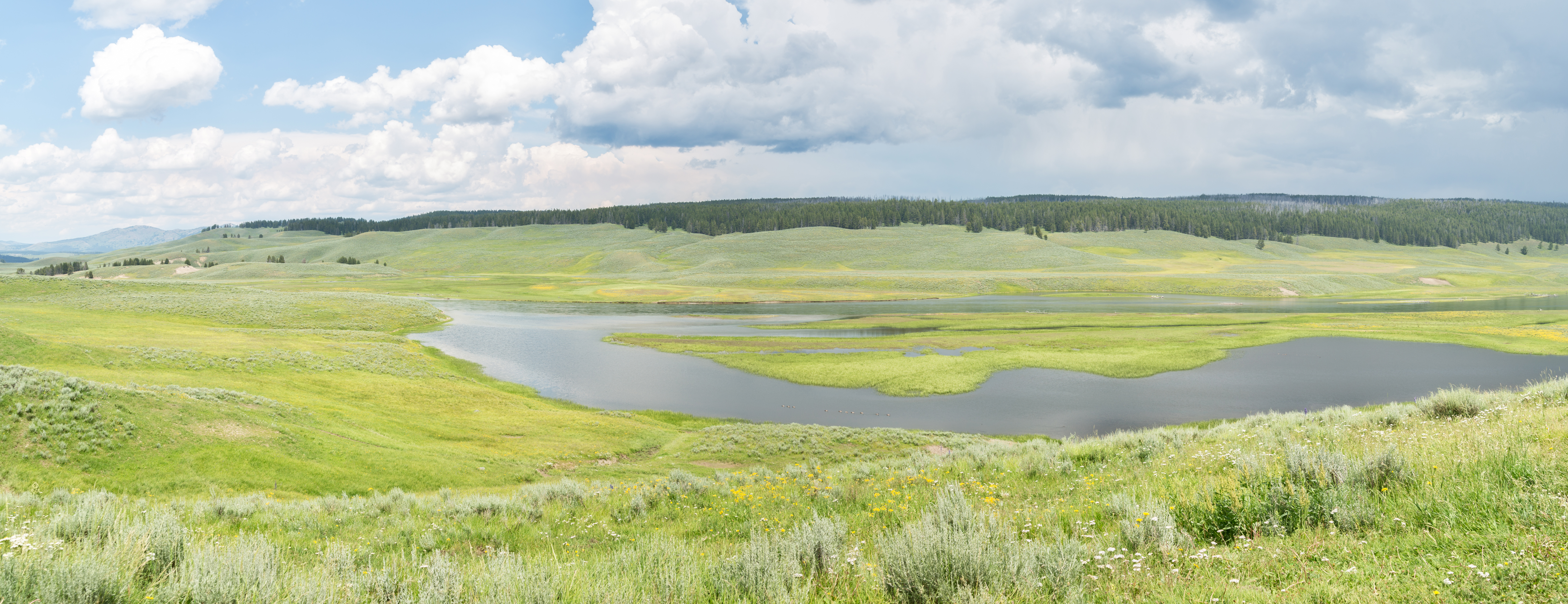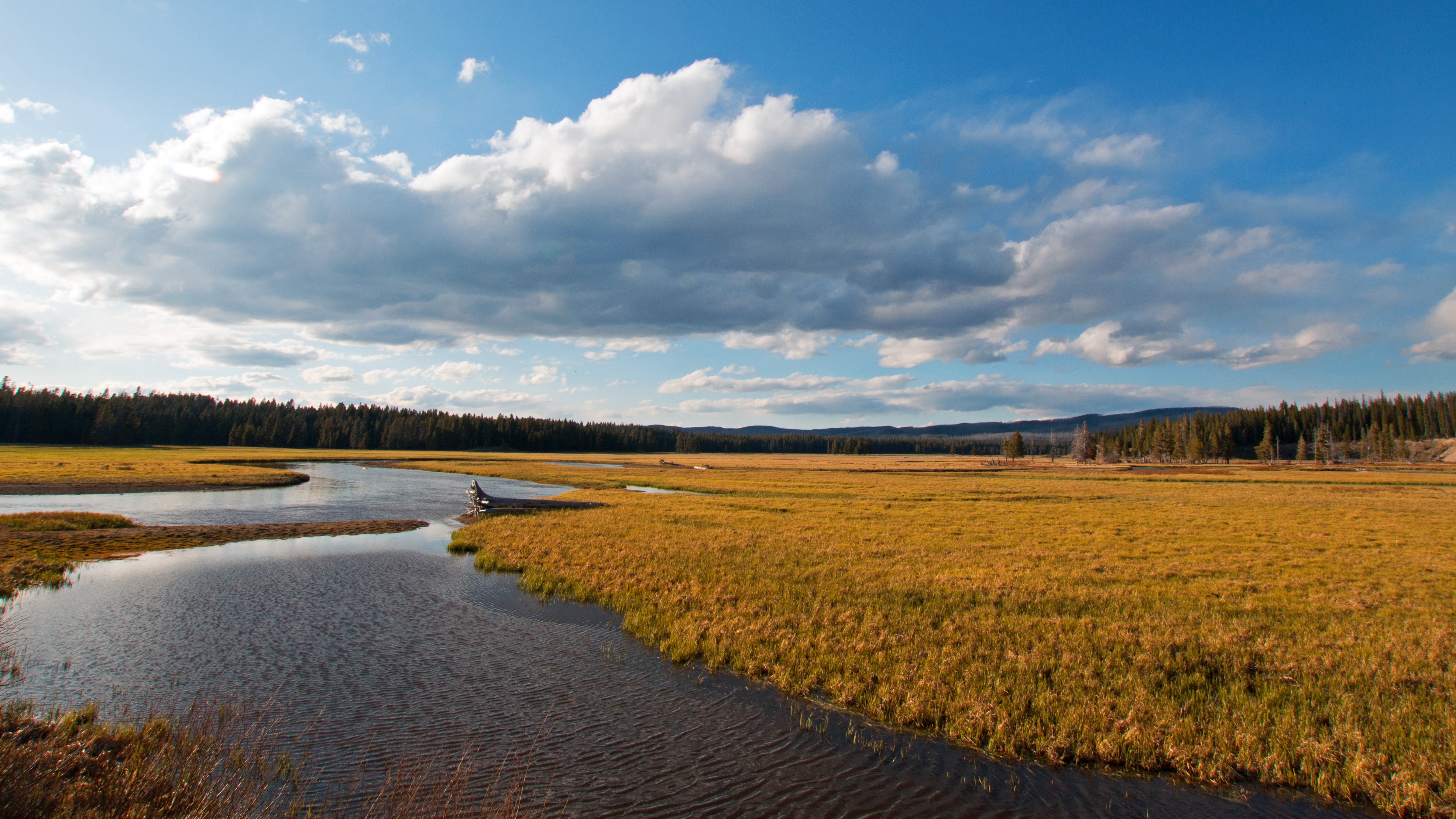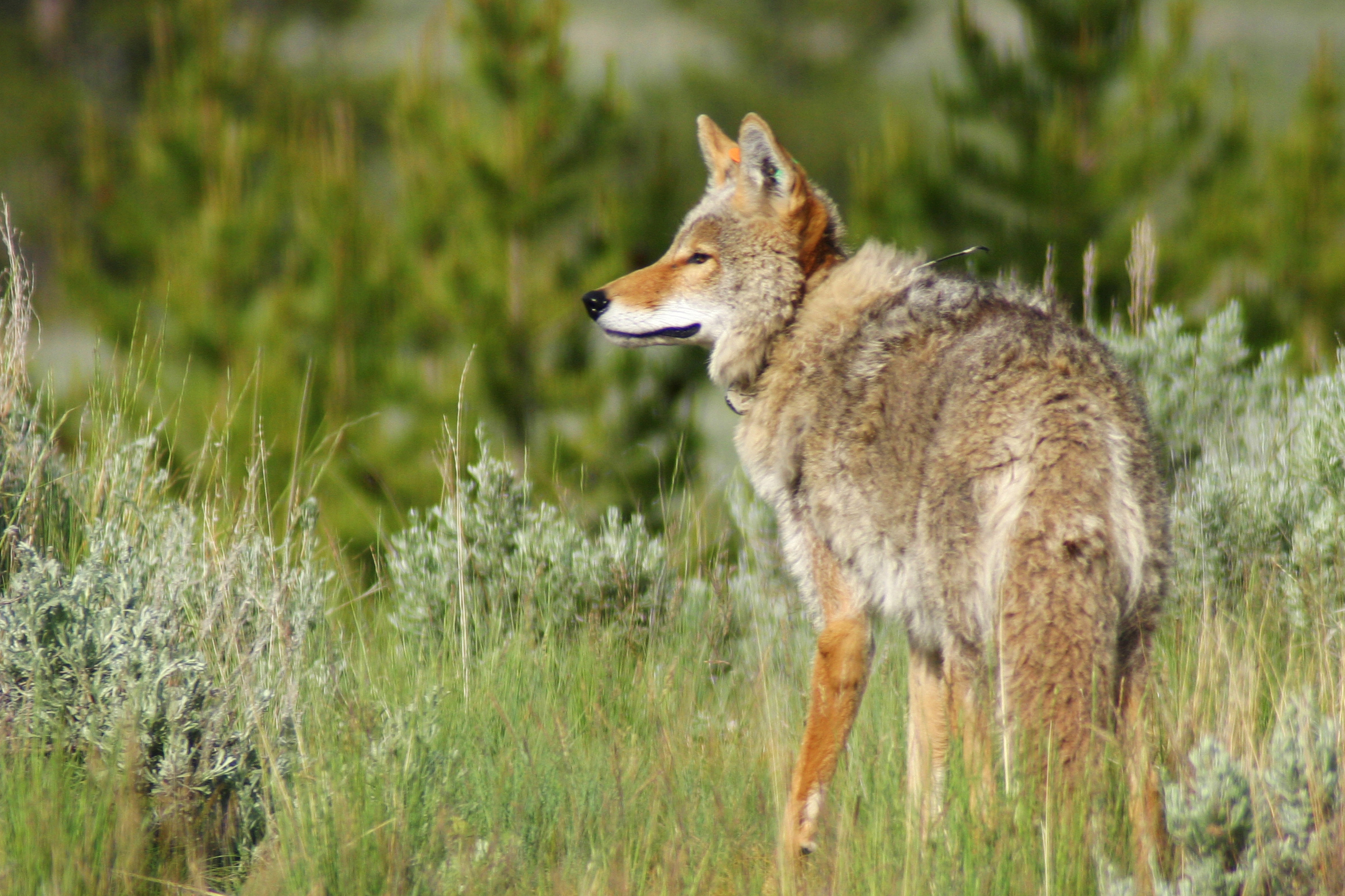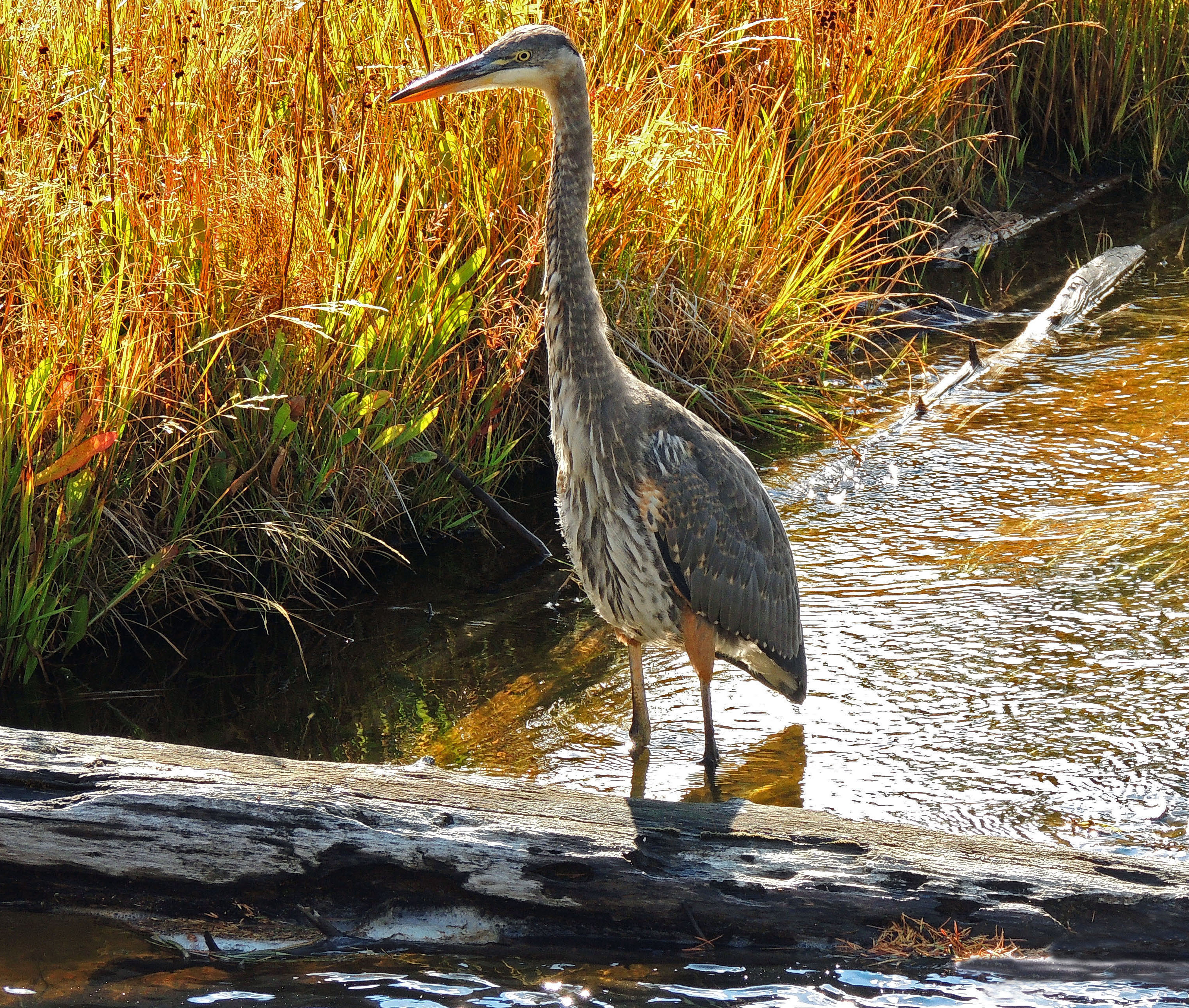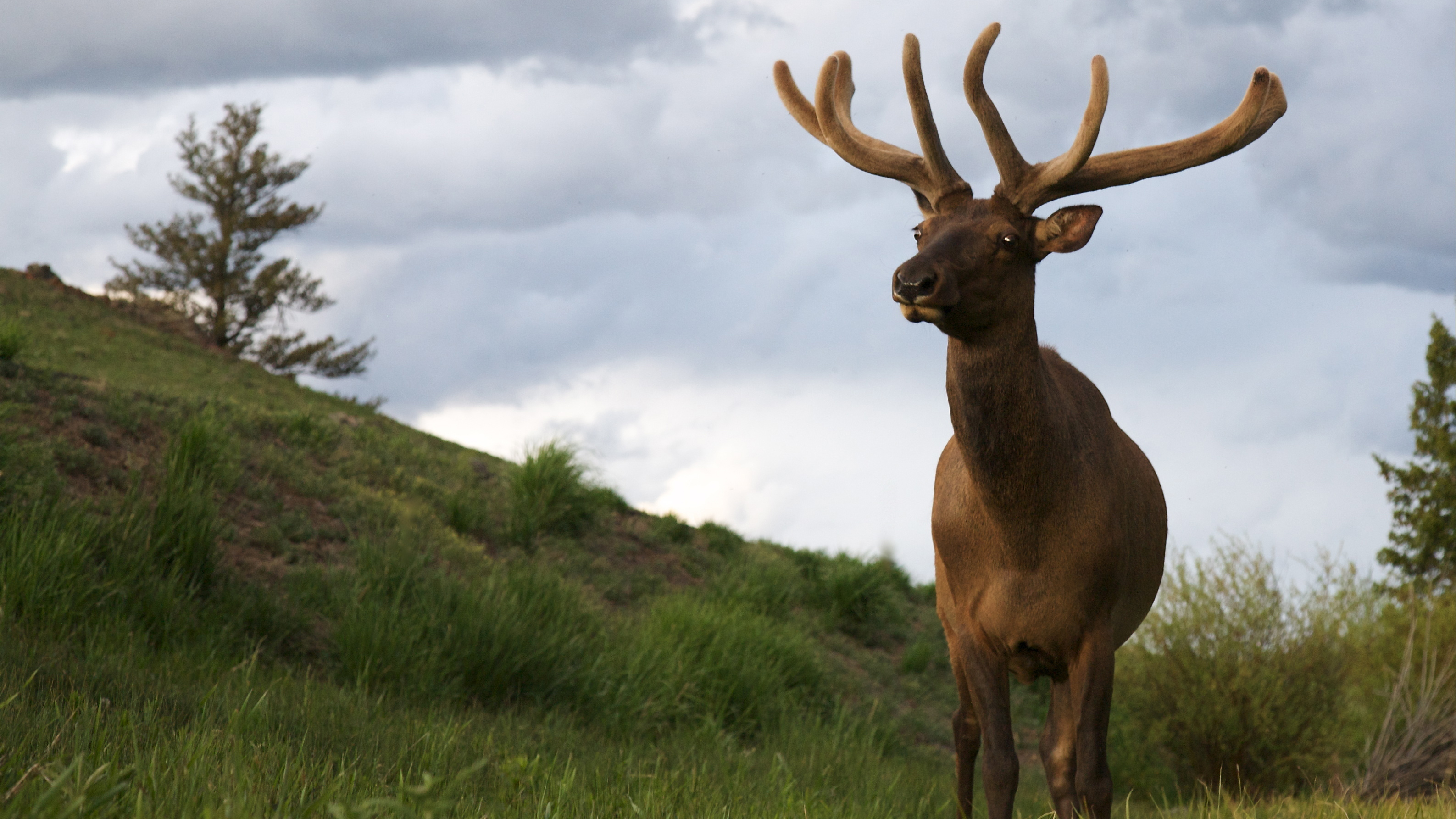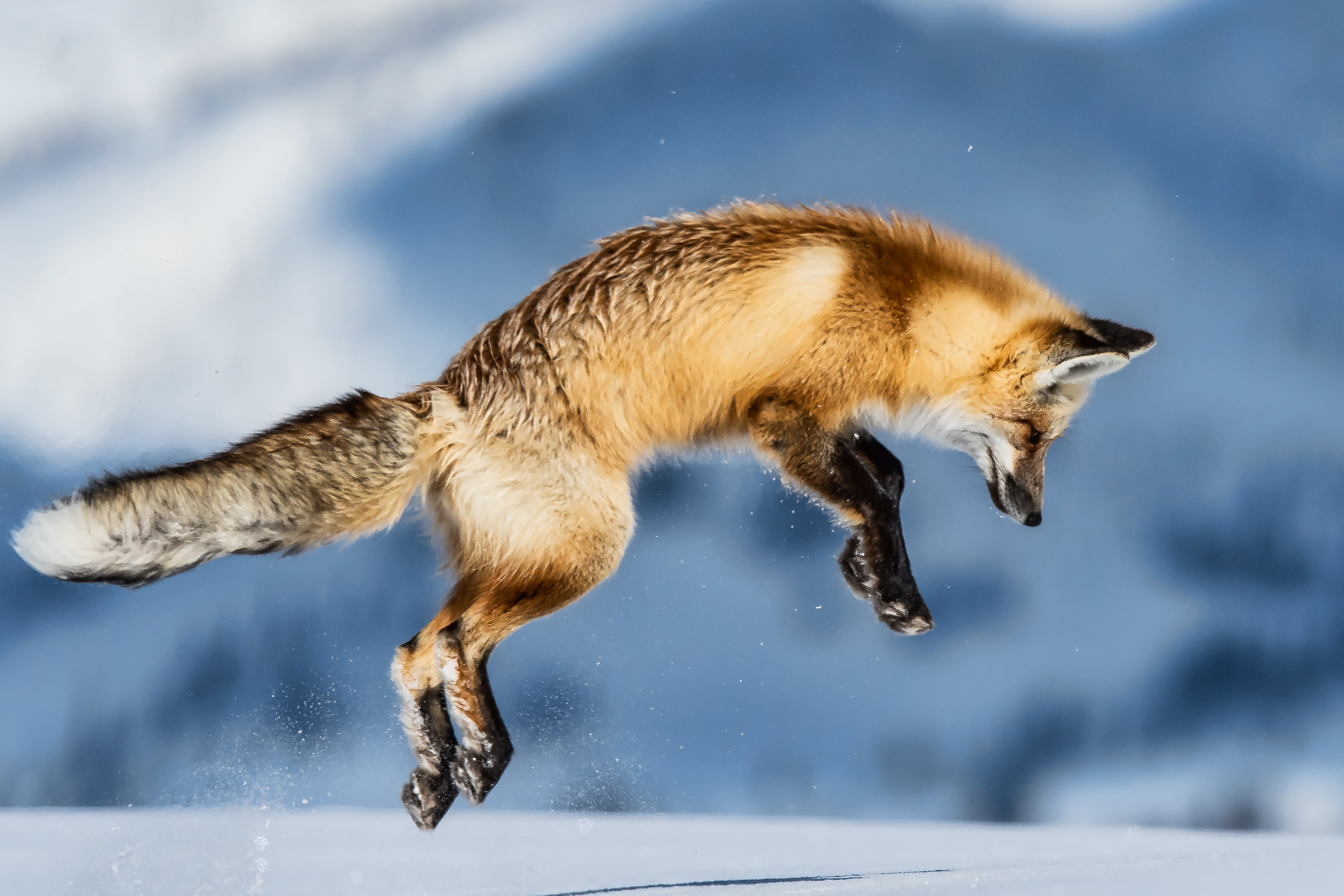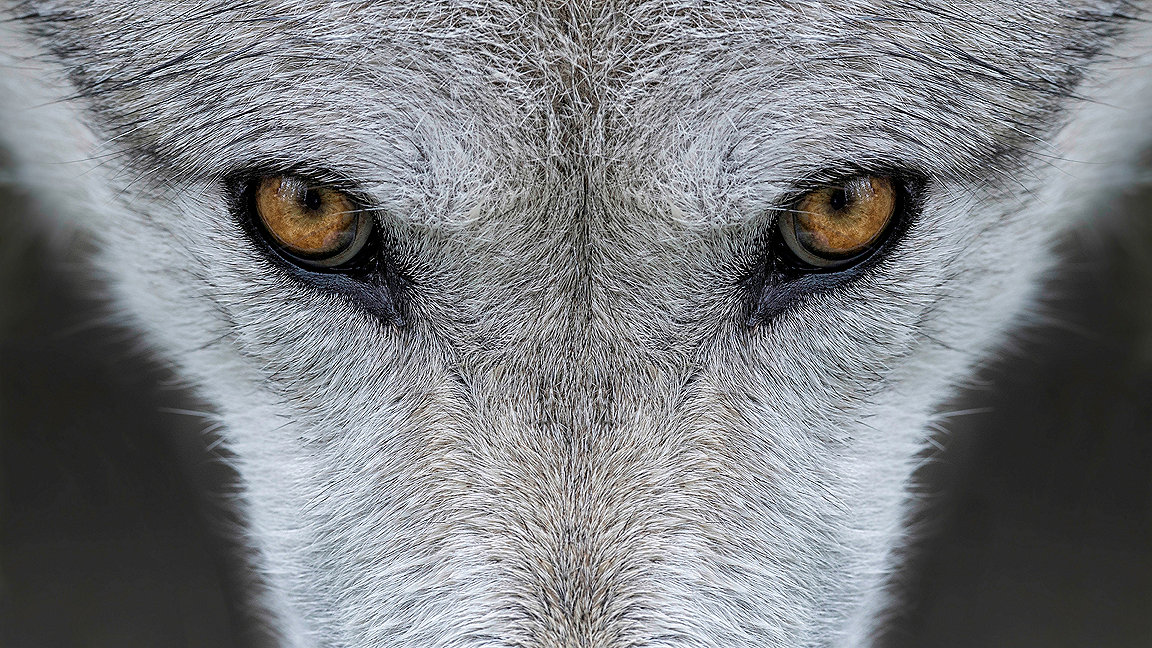
The reintroduction and subsequent recovery of a wolf population in Yellowstone National Park over the past 25 years is one of the great success stories for US conservation.
After an almost 70-year absence from the park and the Northern Rocky Mountains, wolves have thrived, fundamentally altering the Yellowstone ecosystem around them. But their presence remains controversial, especially in the states neighbouring the park.
History of wolves in Yellowstone
The 1872 act designating Yellowstone as a national park stated that it should be 'for the benefit and enjoyment of the people', with 'all timber, mineral deposits, natural curiosities, or wonders' inside its boundaries to be preserved 'in their natural condition'. But the goal of preserving the park's 'natural condition' has always been difficult to fulfil, and is often in conflict with other public policies, and with political and popular agendas. Direct interventions to manage natural assets have always been a part of the park's history.
Ineffective administration in the first decades of the park's existence failed to control trappers, poachers, hunters, and woodcutters who threatened its natural condition. These have included using the US Army in the 1880s and 1890s to protect bison from hunters, suppress fires and control predators, and to cull elk and bison to manage their range and limit their impact on the ecology of the park in the 20th century.
The precise number of wolves in the park in the late 19th century is not known. In the early years of the park's history there were no restrictions on hunting any of the wildlife in the park, with wolves considered predators, they were a particularly attractive target. In 1886, although Congress passed legislation prohibiting hunting of most park animals, mountain lions, coyotes, bears and wolves were excepted.
During the latter half of the 19th century, federal, state and local governments as well as individual ranchers, placed bounties on wolves, as some packs had turned to eating livestock in response to the collapse of the bison population and the encroachment of ranchers into historic wolf ranges. The National Park Service actively controlled the number of wolves in the park, and between 1914 and 1926, at least 136 wolves, including 80 pups, were killed.
Although population control efforts in Yellowstone officially ended in 1926, there were no longer any viable wolf packs in the park as of 1930. Only single or paired wolves were observed in the north-eastern and north-western sections of the park until the 1960s.
Reintroducing wolves
Attitudes towards predators gradually changed in the US after the Second World War, and this was one of the primary reasons for the eventual emergence of public support for the reintroduction of wolves into Yellowstone and elsewhere in the Northern Rocky Mountains. Author and naturalist Aldo Leopold was among the first advocates, mentioning Yellowstone as a possible location for wolf reintroduction as early as 1944.
Conservation biologist John Weaver also recommended restoration after finding no wolves in a 1975–77 survey of the park. Douglas Houston did likewise in an influential 1982 book The Northern Yellowstone Elk, arguing that the lack of wolves in the park was 'the single greatest departure' from its stated objective of 'maintaining natural ecosystems'.
Another reason for this growing support for wolf reintroduction was the apparent effect of the population's collapse on other elements of the natural system in Yellowstone. Elk numbers soared in the wake of the elimination of their most formidable natural predator, which resulted in significant overgrazing of aspen and cottonwood and habitat destruction. Cottonwood and willow recruitment (growth of trees from seedlings and/or suckers) essentially no longer occurred in the northeast sections of the park, and the existing trees were stunted.
Results of the reintroduction
By the 1980s, the shift in public opinion made wolf restoration an explicit National Park Service policy agenda item. In 1980, the US Fish and Wildlife Service produced a recovery plan for grey wolves in the Northern Rocky Mountains, which cover north-west Montana, central Idaho and the greater Yellowstone area. As a result of strong opposition from ranchers and state governments concerned that wolf reintroduction would threaten cattle herds, however, the plan was revised in 1987 to allow greater discretion in killing any wolves that attacked livestock outside the park.
In March 1995, the reintroduction began, and 14 wolves that had been captured in Canada were released into Yellowstone. A total of 41 were introduced between 1995 and 1997. The process of restoration in the 1990s went 'surprisingly smoothly', according to the service, and for many years there was an average wolf population growth of 10%. In its report for 2004, the service estimated there were 171 wolves in 16 separate packs in the park by the end of that year.
Researchers had long predicted that the reintroduced wolves would migrate out from the park as their numbers increased – wildlife does not recognise political boundaries – and an estimated 528 resided in the greater Yellowstone ecosystem, a 89,030 km2 intact temperate-zone ecosystem with Yellowstone National Park at its core, as of early 2020.
Some of the wolves have migrated far beyond this range. In 2009, wolf 341F from Montana used part of a migration corridor to travel from Yellowstone to Eagle County, Colorado, meaning that she travelled about 1,600km in two years. Although she was found dead shortly after – killed by illegal poison – her migration captured the public's imagination, and prompted a push for wolf reintroduction in Colorado's section of the Rocky Mountains. These efforts culminated in 2020 when state voters narrowly passed ballot initiative 114, giving Colorado Parks and Wildlife a mandate to create a wolf reintroduction plan.
Effects on ecology
When wolves were first introduced to the park in the mid-1990s, the landscape of Yellowstone had dramatically changed since the early 20th century when the animals were being systematically hunted in the park as predators. Historical riparian zones, dominated by willows and other woody plants as well as active beaver dams, had been replaced with grasslands, along with a reduction in the number of beavers and their associated stream engineering.
While the drier conditions created in the park by climate change have been a likely contributor to this, researchers also identified that the elimination of wolf predation resulted in a booming elk population, which overgrazed and depressed woody plant growth and limited the beavers' source of food and building materials.
Since the reintroduction of wolves, Yellowstone elk populations and overgrazing have been significantly reduced. The winter elk population in the northern range was reduced from 17,000 in 1995 to a more ecologically appropriate herd size of 5,800 by 2019. As a result, woody plants have rebounded in riparian corridors, re-creating the conditions for beaver population increase and more stream engineering. In 1996 Yellowstone had no beaver colonies but by 2004 there were seven, one study found.
'When wolves were introduced in the mid-1990s, the landscape of Yellowstone had dramatically changed since the early 20th century'
Early evidence suggests that these same ecological changes have coincided with the recovery of wolves. The increase in beavers and their dams has significantly altered the Yellowstone watershed, slowing the flow of some streams and keeping seasonal water levels more regular. It has also countered erosion and created cooler shaded waters ideal for trout, as well as more ponds and marsh habitat for species including moose, mink, wading birds such as herons, waterfowl and amphibians.
While many of these effects were foreseen and intended, there have also been some surprising unintended consequences of wolves' reintroduction. While it was expected that elk numbers would be reduced, the presence of the wolf packs has also significantly altered elk behaviour. They have moved into less desirable habitat and suffered increased stress levels, which has affected their nutrition and lowered their overall birth rate, according to another study.
There have been unexpected effects for other species as well. For example, the number of coyotes in the park has been significantly reduced thanks to competition with wolves for the same prey, as well as a result of direct wolf predation. Since foxes are the natural prey of coyotes, the decline in coyote numbers has also led to a significant increase in foxes in the park; this in turn has adversely affected the numbers of hares and small nesting birds, the natural prey of foxes.
The next chapter
The reintroduction of wolves into Yellowstone is a classic example of how public attitudes about nature and the environment have shifted dramatically over the 150 years since its establishment as one of the first US national parks.
Interventions in the natural system once considered perfectly appropriate and in harmony with preserving the 'natural condition', such as systematic elimination of predator species, came into conflict with changing visions about what a national park should be. New interventions, including the reintroduction of wolves, became the norm in an effort to restore the conditions that existed at Yellowstone's 1872 designation.
But just as the earlier elimination of predators had unintended ecological consequences, the reintroduction of wolves into Yellowstone continues to have unforeseen ecological impacts. A quarter of a century on, wolves have made the park their own – even if the mechanisms by which they affect their ecosystem are still debated, and their unintended effects examined.
The programme serves as an experiment to determine the ecological impact of reintroducing a predator species into a natural setting where it was once at the top of the food chain. Its success to date has been due in large part to support and cooperation from various federal, state, and local governments and grassroots organisations.
But the protection of the Yellowstone wolf packs is only guaranteed in the park itself, and the story – and the experiment – are far from over. Despite the success within Yellowstone, the larger narrative of how, and whether, predators such as wolves should be brought back in large numbers to vast areas of the western US where ranching is the largest contributor to the local economies is still a contentious topic, and the subject of heated political debate.
'The reintroduction of wolves into Yellowstone continues to have unforeseen ecological impacts'
Margo E. LaClair is an analyst on the complex real-estate analysis and litigation support services team at JLL Valuation Advisory, a division of Jones Lang LaSalle
Contact Margo: Email
Richard J. Roddewig FRICS is managing director and national director of litigation support at JLL Valuation Advisory, a division of Jones Lang LaSalle
Contact Richard: Email
Related competencies include: GIS (geographical information systems), Management of the natural environment and landscape, Sustainability

